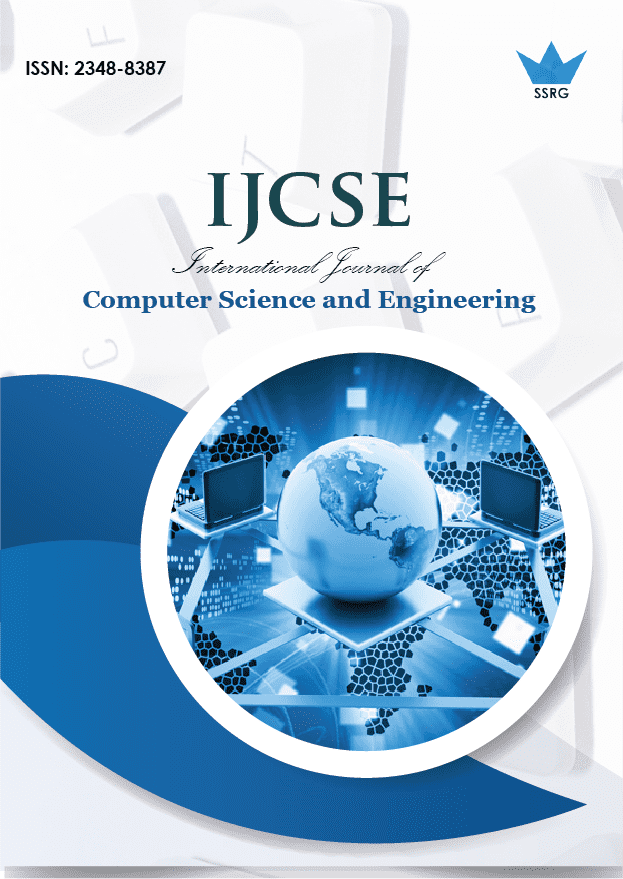Designing Scalable Multi-Agent AI Systems: Leveraging Domain-Driven Design and Event Storming

| International Journal of Computer Science and Engineering |
| © 2025 by SSRG - IJCSE Journal |
| Volume 12 Issue 3 |
| Year of Publication : 2025 |
| Authors : Kunal Nandi, Kaustav Dey |
How to Cite?
Kunal Nandi, Kaustav Dey, "Designing Scalable Multi-Agent AI Systems: Leveraging Domain-Driven Design and Event Storming," SSRG International Journal of Computer Science and Engineering , vol. 12, no. 3, pp. 10-16, 2025. Crossref, https://doi.org/10.14445/23488387/IJCSE-V12I3P102
Abstract:
Multi-Agent AI Systems (MAS) are increasingly used to tackle complex real-world problems. By 2025, 82% of organizations plan to integrate AI agents (1), with 25% already deploying them (2). This paper explores how combining Event Storming and Domain-Driven Design (DDD) provides a structured approach to designing effective MAS. The integration of these methodologies enhances scalability, robustness, and domain alignment. We demonstrate this approach using a supply chain management case study and discuss best practices for scaling and optimizing MAS.
Keywords:
Bounded contexts, Domain-Driven Design, Event storming, Multi-Agent Systems, Agent based modelling.
References:
[1] “Generative AI in Organizations Report,” Capgemini, pp. 1-76, 2024.
[Publisher Link]
[2] Deloitte Study: The Use of Gen AI Will Double Global Data Centers’ Electricity Consumption by 2030, Deloitte, 2025. [Online]. Available: https://www.deloitte.com/ro/en/about/press-room/studiu-deloitte-utilizarea-inteligentei-artificiale-generative-va-dubla consumul-de-energie-electrica-al-centrelor-de-date-la-nivel-global-pana-2030.html
[3] Multi-Agent System Architecture, Smythos AI, 2025. [Online]. Available: https://smythos.com/ai-agents/multi-agent-systems/
[4] Jerome Boyer, Event Storming Methodology, IBM Cloud Architecture, 2022. [Online]. Available: https://ibm-cloud architecture.github.io/refarch-eda/methodology/event-storming/
[5] Four Design Patterns for Event-Driven, Multi-Agent Systems, Confluent Blog, 2025. [Online]. Available: https://www.confluent.io/blog/event-driven-multi-agent-systems/
[6] Fabio Bellifemine, Giovanni Caire, and Dominic Greenwood, Developing Multi-Agent Systems with JADE, John Wiley & Sons, Ltd, 2007.
[CrossRef] [Google Scholar] [Publisher Link]
[7] Alberto Brandolini, Introducing EventStorming: An Act of Deliberate Collective Learning, Leanpub, 2013.
[Google Scholar] [Publisher Link]
[8] Eric Evans, Domain-Driven Design: Tackling Complexity in the Heart of Software,” Addison-Wesley, 2004.
[Google Scholar] [Publisher Link]
[9] Anand S. Rao, and Michael P. Georgeff, “BDI Agents: From Theory to Practice,” Proceedings of the First International Conference on Multi-Agent Systems, pp. 312-319, 1995.
[Google Scholar] [Publisher Link]
[10] Yoav Shoham, and Kevin Leyton-Brown, “Multiagent Systems: Algorithmic, Game-Theoretic, and Logical Foundations,” Cambridge University Press, 2008.
[CrossRef] [Google Scholar] [Publisher Link]
[11] Vaughn Vernon, Implementing Domain-Driven Design, 1st ed., Addison-Wesley, 2013.
[Google Scholar] [Publisher Link]
[12] Michael Wooldridge, and Nicholas R. Jennings, “Intelligent Agents: Theory and Practice,” The Knowledge Engineering Review, vol. 10, no. 2, pp. 115-152, 1995.
[CrossRef] [Google Scholar] [Publisher Link]
[13] Scott Wlaschin, Domain Modeling Made Functional: Tackle Software Complexity with Domain-Driven Design and F#, Pragmatic Bookshelf, pp. 1-260, 2017.
[Google Scholar] [Publisher Link]
[14] Franco Zambonelli, Nicholas R. Jennings, and Michael Wooldridge, “Developing Multiagent Systems: The Gaia Methodology,” ACM Transactions on Software Engineering and Methodology, United States, vol. 12, no. 3, pp. 317-370, 2003.
[CrossRef] [Google Scholar] [Publisher Link]
[15] Yoav Shoham, and Kevin Leyton-Brown, Multiagent Systems: Algorithmic, Game-Theoretic, and Logical Foundations, pp. 1-532, 2009. [Online]. Available: https://www.masfoundations.org/mas.pdf

 10.14445/23488387/IJCSE-V12I3P102
10.14445/23488387/IJCSE-V12I3P102